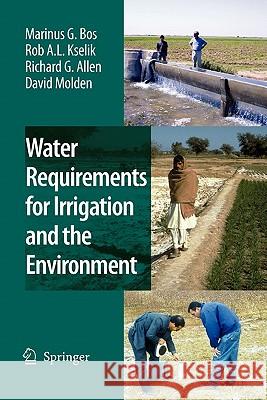Water Requirements for Irrigation and the Environment » książka
Water Requirements for Irrigation and the Environment
ISBN-13: 9789048180332 / Angielski / Miękka / 2010 / 174 str.
Irrigated agriculture produces about 40% of all food and fibre on about 16% of all cropped land. As such, irrigated agriculture is a productive user of resources; both in terms of yield per cropped area and in yield per volume of water consumed. Many irrigation projects, however, use (divert or withdraw) much more water than consumed by the crop. The non-consumed fraction of the water may cause a variety of undesirable effects ranging from water-logging and salinity within the irrigated area to downstram water pollution. This book discusses all components of the water balance of an irrigated area; evapotranspiration (Ch.2), effective precipitation (Ch.3) and capillary rise from the groundwater table (Ch.4). Chapter 5 then combines all components into a water management strategy that balances actual evapotranspiration (and thus crop yield) with the groundwater balance of the irrigated area (for a substainable environment). Chapter 6 presents CRIWAR 3.0, a simulation program that combines all water balance components into a single simulation procedure. The chapter describes the use of the CRIWAR software for developing water requirement tables and other useful information based on the selected water management strategy. This version greatly expands upon the capabilities of previously published programs.











